-
 Bitcoin
Bitcoin $99,594.2189
-3.59% -
 Ethereum
Ethereum $2,188.5793
-9.00% -
 Tether USDt
Tether USDt $1.0001
-0.02% -
 XRP
XRP $1.9745
-5.82% -
 BNB
BNB $608.9511
-3.73% -
 Solana
Solana $130.4575
-5.93% -
 USDC
USDC $1.0000
0.01% -
 TRON
TRON $0.2637
-3.59% -
 Dogecoin
Dogecoin $0.1493
-5.97% -
 Cardano
Cardano $0.5322
-6.72% -
 Hyperliquid
Hyperliquid $33.9044
3.33% -
 Bitcoin Cash
Bitcoin Cash $449.6411
-5.46% -
 UNUS SED LEO
UNUS SED LEO $8.9629
0.43% -
 Sui
Sui $2.3943
-8.35% -
 Chainlink
Chainlink $11.4402
-7.83% -
 Stellar
Stellar $0.2241
-6.49% -
 Avalanche
Avalanche $16.1489
-4.24% -
 Toncoin
Toncoin $2.7182
-5.94% -
 Shiba Inu
Shiba Inu $0.0...01040
-5.72% -
 Litecoin
Litecoin $78.7882
-4.07% -
 Ethena USDe
Ethena USDe $1.0004
-0.01% -
 Hedera
Hedera $0.1305
-7.45% -
 Monero
Monero $297.0030
-5.32% -
 Dai
Dai $0.9997
-0.02% -
 Polkadot
Polkadot $3.1834
-6.03% -
 Bitget Token
Bitget Token $3.9788
-7.03% -
 Uniswap
Uniswap $6.1327
-10.62% -
 Pepe
Pepe $0.0...08689
-8.30% -
 Pi
Pi $0.4826
-9.65% -
 Aave
Aave $219.8043
-9.69%
How to deal with MA moving average short position arrangement? How to set the stop loss point?
Traders use MA crossovers, like the 50-day SMA below the 200-day SMA, to initiate short positions, setting stop losses above recent highs or the shorter-term MA.
May 24, 2025 at 01:00 pm
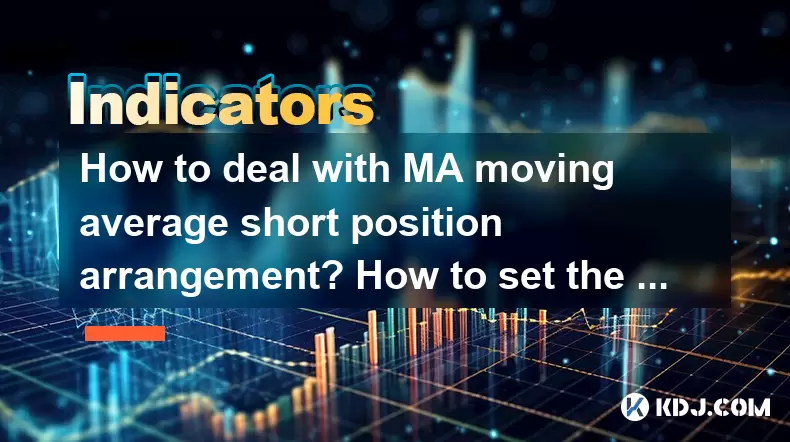
Understanding MA Moving Average Short Position Arrangement
Moving Average (MA) is a popular technical indicator used by traders to identify trends and potential reversals in the market. When considering a short position arrangement using MA, it is crucial to understand how different types of moving averages can be applied to enhance your trading strategy. The most commonly used MAs for short positions are the Simple Moving Average (SMA) and the Exponential Moving Average (EMA). These indicators help traders determine when a security might be overbought and ready for a downward move.
To arrange a short position using MA, traders typically look for a bearish crossover, where a shorter-term MA crosses below a longer-term MA. For instance, a common setup might be the 50-day SMA crossing below the 200-day SMA, often referred to as the "death cross." This signal suggests that the asset's price is likely to decline, prompting traders to initiate a short position.
Setting Up a Short Position Using MA
To set up a short position using MA, follow these steps:
- Choose the appropriate MAs: Decide on the time frames that suit your trading style. A common pair is the 50-day and 200-day SMA, but you might also consider shorter periods like the 20-day and 50-day SMA for more active trading.
- Monitor for bearish crossovers: Keep an eye on your chosen MAs. A short position opportunity arises when the shorter-term MA crosses below the longer-term MA.
- Confirm the signal: Before entering a short position, look for additional bearish signals such as a declining Relative Strength Index (RSI) or a bearish candlestick pattern to increase the probability of a successful trade.
- Execute the short position: Once the bearish crossover is confirmed, initiate a short sale on the chosen cryptocurrency. This means selling the asset with the intention of buying it back at a lower price to profit from the price decline.
Determining the Stop Loss Point
Setting an appropriate stop loss point is crucial to manage risk when trading short positions. The stop loss helps limit potential losses if the market moves against your position. Here's how to set a stop loss point using MA:
- Identify the entry point: Note the price at which you enter the short position.
- Calculate the stop loss level: A common method is to place the stop loss just above a recent high or resistance level. Alternatively, you can set it a certain percentage above your entry point, typically between 1% and 3%.
- Use MA as a reference: Some traders set their stop loss just above the shorter-term MA used in the bearish crossover. For example, if you entered a short position when the 50-day SMA crossed below the 200-day SMA, you might place your stop loss just above the 50-day SMA.
Adjusting the Stop Loss as the Trade Progresses
Once you have entered a short position and set your initial stop loss, it's important to manage the trade as it progresses. Here are some strategies for adjusting your stop loss:
- Trailing stop loss: As the price moves in your favor, you can move the stop loss down to lock in profits. A trailing stop loss can be set at a fixed percentage or distance from the current market price.
- Using MAs for dynamic stop loss: You can use the shorter-term MA as a dynamic stop loss level. If the price moves below this MA, you might consider adjusting your stop loss accordingly.
- Reassessing market conditions: Continuously monitor market conditions and adjust your stop loss based on new information or changes in the trend. If the bearish trend strengthens, you might tighten your stop loss to secure more profits.
Monitoring and Exiting the Short Position
Effective monitoring and timely exit from a short position are essential for successful trading. Here are some tips for managing your short position:
- Set clear profit targets: Before entering the trade, decide on your profit targets. These could be based on support levels or a specific percentage gain.
- Use technical indicators: Continuously monitor other technical indicators like the RSI, MACD, or Bollinger Bands to confirm the bearish trend and adjust your strategy as needed.
- Stay informed: Keep up with news and events that could impact the cryptocurrency market. Sudden positive news can reverse a bearish trend, necessitating a quick exit from your short position.
- Exit the trade: When your profit target is reached or if the market shows signs of reversing, close your short position by buying back the cryptocurrency at the current market price.
Common Mistakes to Avoid
When dealing with MA moving average short position arrangements, it's important to avoid common pitfalls that can lead to losses. Here are some mistakes to watch out for:
- Ignoring market volatility: High volatility can lead to false signals and whipsaws, causing premature exits or entries. Always consider the volatility of the asset before entering a trade.
- Over-reliance on a single indicator: While MA can be a powerful tool, it should not be the only factor in your trading decisions. Use other indicators and analysis methods to confirm your signals.
- Failing to adjust stop loss: A static stop loss can lead to unnecessary losses if the market moves against you. Always adjust your stop loss as the trade progresses to protect your gains.
- Chasing losses: Avoid increasing your position size to recover from losses. This can lead to even greater losses and emotional trading decisions.
Frequently Asked Questions
Q: Can I use other types of MAs for short position arrangements?
A: Yes, besides SMA and EMA, traders can use other types of MAs such as the Weighted Moving Average (WMA) or the Hull Moving Average (HMA). Each type has its own characteristics and may suit different trading strategies.
Q: How do I choose the right time frame for my MAs?
A: The choice of time frame depends on your trading style. Short-term traders might use 10-day and 20-day MAs, while long-term investors could opt for 50-day and 200-day MAs. Consider your investment horizon and risk tolerance when selecting time frames.
Q: Is it necessary to use multiple MAs for short position arrangements?
A: While using a single MA can provide signals, using multiple MAs can offer more robust signals and help filter out false positives. For example, using both a short-term and a long-term MA can provide a clearer picture of the trend.
Q: How often should I monitor my short positions?
A: The frequency of monitoring depends on your trading style and the volatility of the asset. For active traders, monitoring every few hours or even more frequently might be necessary. For longer-term positions, daily or weekly checks might suffice. Always adjust your monitoring based on market conditions and the specific trade.
Disclaimer:info@kdj.com
The information provided is not trading advice. kdj.com does not assume any responsibility for any investments made based on the information provided in this article. Cryptocurrencies are highly volatile and it is highly recommended that you invest with caution after thorough research!
If you believe that the content used on this website infringes your copyright, please contact us immediately (info@kdj.com) and we will delete it promptly.
- Altcoins Under Pressure: Cardano and XRP Face Critical Tests
- 2025-06-23 12:25:12
- Rare Coin Fever in Wiltshire: Auctions, Errors, and Olympic Gold!
- 2025-06-23 12:25:12
- XRP Price Under Pressure: War Fears and Market Sentiment
- 2025-06-23 12:30:12
- HAI Token Private Key Leak: What Happened and How to Stay Safe
- 2025-06-23 12:45:12
- Texas Goes All In: Bitcoin Reserve Signals Big State Embrace
- 2025-06-23 12:45:12
- Pi Network's Price Plunge: Crash, Scammer Accusations, and What's Next?
- 2025-06-23 13:05:12
Related knowledge
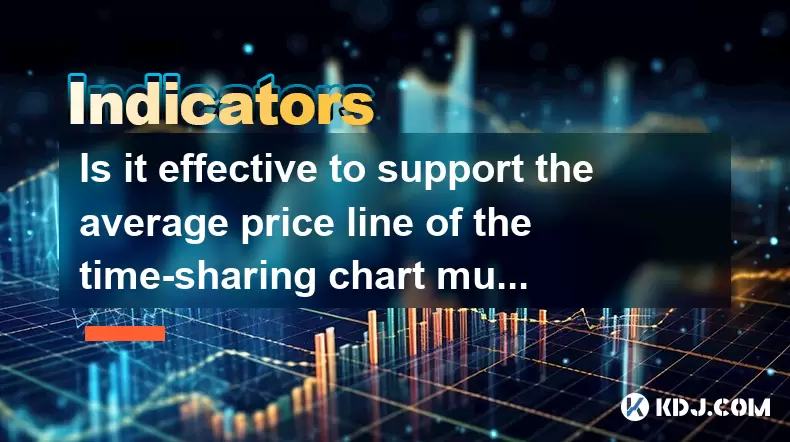
Is it effective to support the average price line of the time-sharing chart multiple times?
Jun 23,2025 at 01:36pm
Understanding the Average Price Line in Time-Sharing ChartsIn cryptocurrency trading, time-sharing charts refer to real-time price charts that display price movements over short intervals, often within a single trading day. Within these charts, the average price line, also known as the Volume Weighted Average Price (VWAP), is a commonly used technical i...
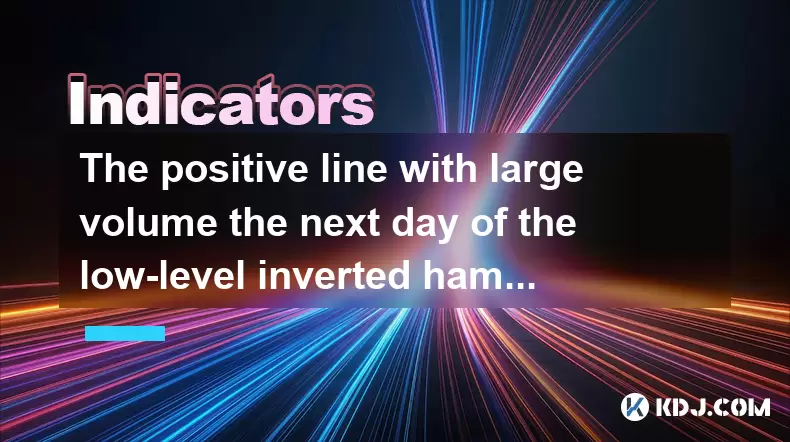
The positive line with large volume the next day of the low-level inverted hammer line confirms the reversal?
Jun 23,2025 at 01:21pm
Understanding the Low-Level Inverted Hammer LineThe inverted hammer line is a single candlestick pattern that typically appears at the end of a downtrend. It has a small real body near the bottom of the trading range and a long upper shadow, indicating that bulls attempted to push prices higher but were met with selling pressure. When this pattern forms...
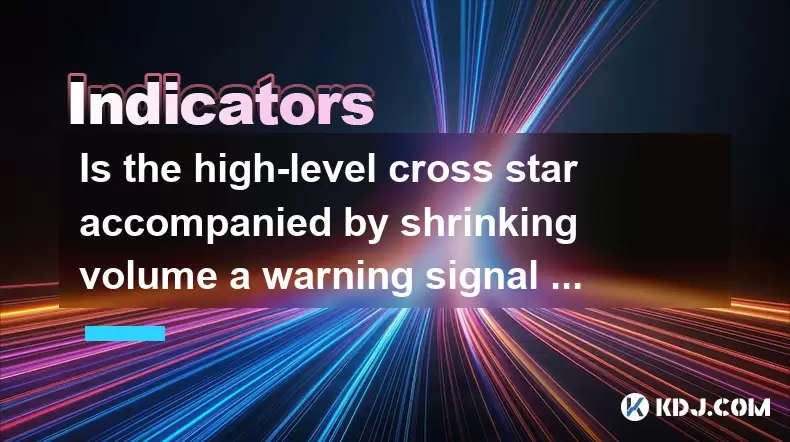
Is the high-level cross star accompanied by shrinking volume a warning signal of peaking?
Jun 23,2025 at 01:28pm
Understanding High-Level Cross Star PatternsIn the world of cryptocurrency trading, candlestick patterns are essential tools for technical analysis. One such pattern is the high-level cross star, which appears as a doji or near-doji candle at a significant resistance level. This pattern often indicates indecision in the market and can be interpreted as ...
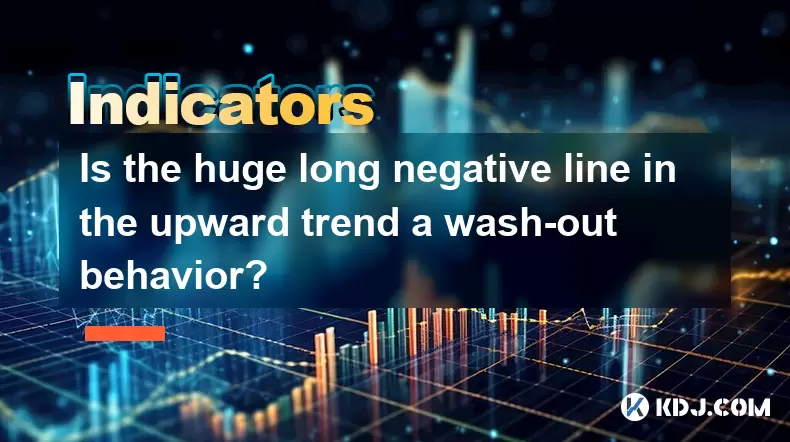
Is the huge long negative line in the upward trend a wash-out behavior?
Jun 23,2025 at 12:49pm
Understanding the Long Negative Candlestick in an Uprising TrendA long negative candlestick, often referred to as a long red or bearish candle, appearing during an upward trend can raise concerns among traders and investors. This pattern typically indicates a sudden and significant drop in price after a period of rising prices. It is often interpreted a...

Can the EXPMA golden cross stand on the 5-day line at the same time?
Jun 23,2025 at 11:42am
Understanding the EXPMA Indicator in Cryptocurrency TradingThe Exponential Moving Average (EXPMA) is a popular technical analysis tool used by cryptocurrency traders to identify trends and potential reversal points. Unlike simple moving averages, the EXPMA gives more weight to recent price data, making it more responsive to current market conditions. In...

Does the second surge in the RSI overbought zone induce more?
Jun 22,2025 at 08:35am
Understanding the RSI Overbought ZoneThe Relative Strength Index (RSI) is a momentum oscillator commonly used in technical analysis to measure the speed and change of price movements. It ranges from 0 to 100, with values above 70 typically considered overbought and values below 30 considered oversold. When the RSI enters the overbought zone for the firs...

Is it effective to support the average price line of the time-sharing chart multiple times?
Jun 23,2025 at 01:36pm
Understanding the Average Price Line in Time-Sharing ChartsIn cryptocurrency trading, time-sharing charts refer to real-time price charts that display price movements over short intervals, often within a single trading day. Within these charts, the average price line, also known as the Volume Weighted Average Price (VWAP), is a commonly used technical i...

The positive line with large volume the next day of the low-level inverted hammer line confirms the reversal?
Jun 23,2025 at 01:21pm
Understanding the Low-Level Inverted Hammer LineThe inverted hammer line is a single candlestick pattern that typically appears at the end of a downtrend. It has a small real body near the bottom of the trading range and a long upper shadow, indicating that bulls attempted to push prices higher but were met with selling pressure. When this pattern forms...

Is the high-level cross star accompanied by shrinking volume a warning signal of peaking?
Jun 23,2025 at 01:28pm
Understanding High-Level Cross Star PatternsIn the world of cryptocurrency trading, candlestick patterns are essential tools for technical analysis. One such pattern is the high-level cross star, which appears as a doji or near-doji candle at a significant resistance level. This pattern often indicates indecision in the market and can be interpreted as ...

Is the huge long negative line in the upward trend a wash-out behavior?
Jun 23,2025 at 12:49pm
Understanding the Long Negative Candlestick in an Uprising TrendA long negative candlestick, often referred to as a long red or bearish candle, appearing during an upward trend can raise concerns among traders and investors. This pattern typically indicates a sudden and significant drop in price after a period of rising prices. It is often interpreted a...

Can the EXPMA golden cross stand on the 5-day line at the same time?
Jun 23,2025 at 11:42am
Understanding the EXPMA Indicator in Cryptocurrency TradingThe Exponential Moving Average (EXPMA) is a popular technical analysis tool used by cryptocurrency traders to identify trends and potential reversal points. Unlike simple moving averages, the EXPMA gives more weight to recent price data, making it more responsive to current market conditions. In...

Does the second surge in the RSI overbought zone induce more?
Jun 22,2025 at 08:35am
Understanding the RSI Overbought ZoneThe Relative Strength Index (RSI) is a momentum oscillator commonly used in technical analysis to measure the speed and change of price movements. It ranges from 0 to 100, with values above 70 typically considered overbought and values below 30 considered oversold. When the RSI enters the overbought zone for the firs...
See all articles

























































































